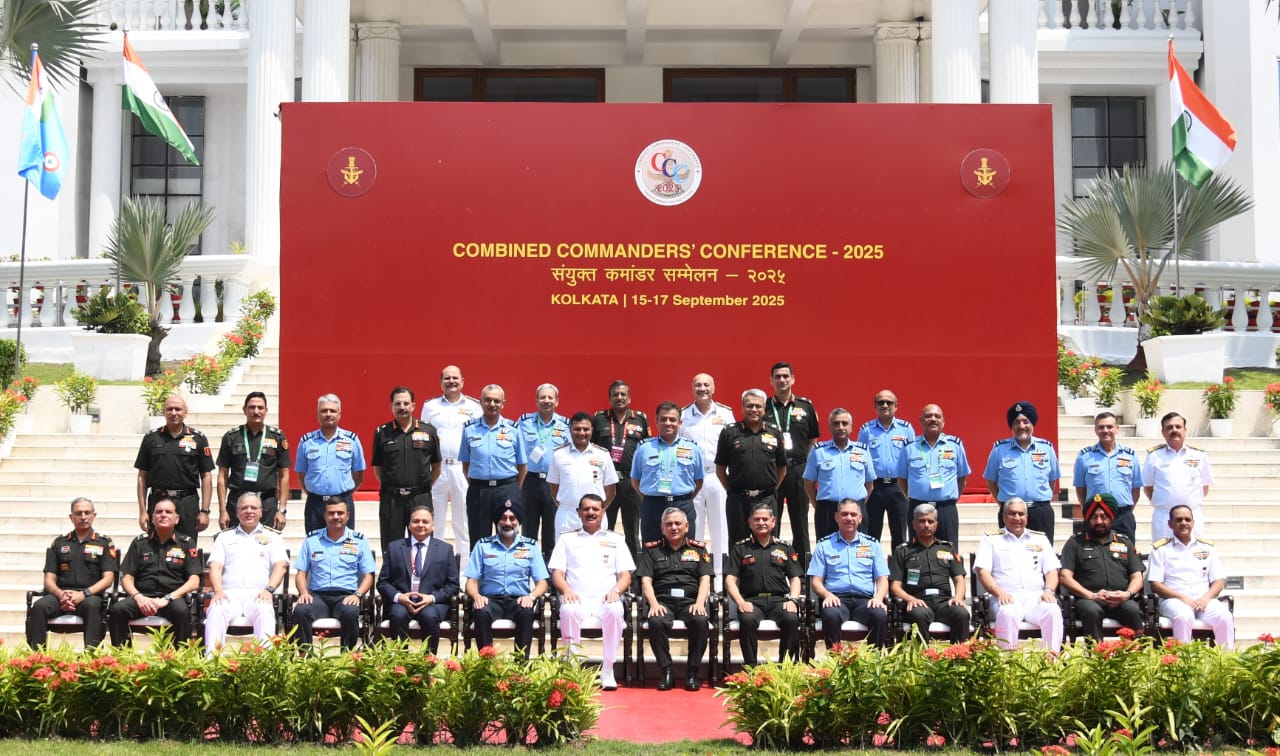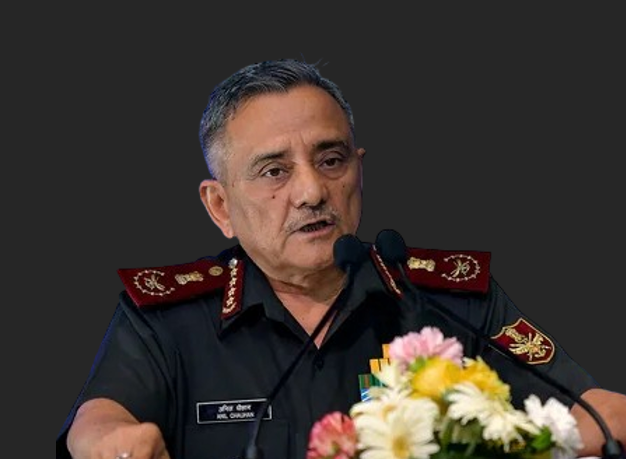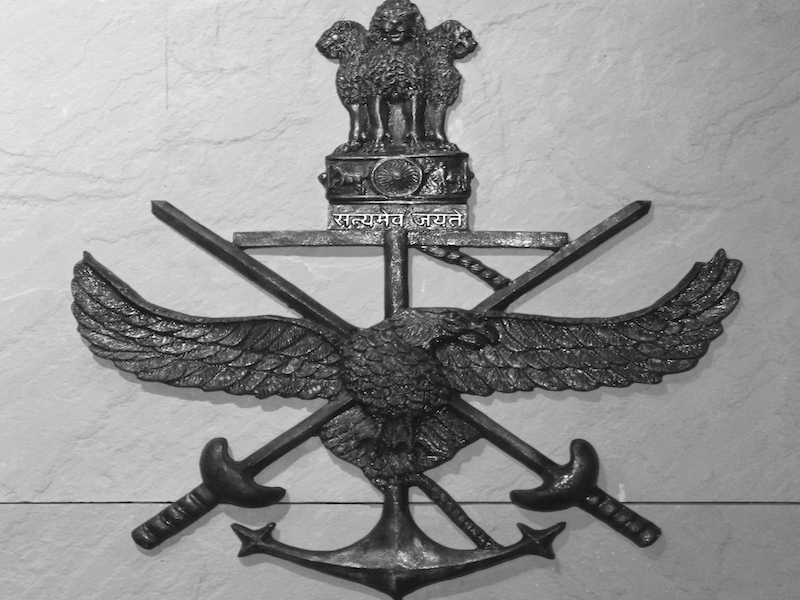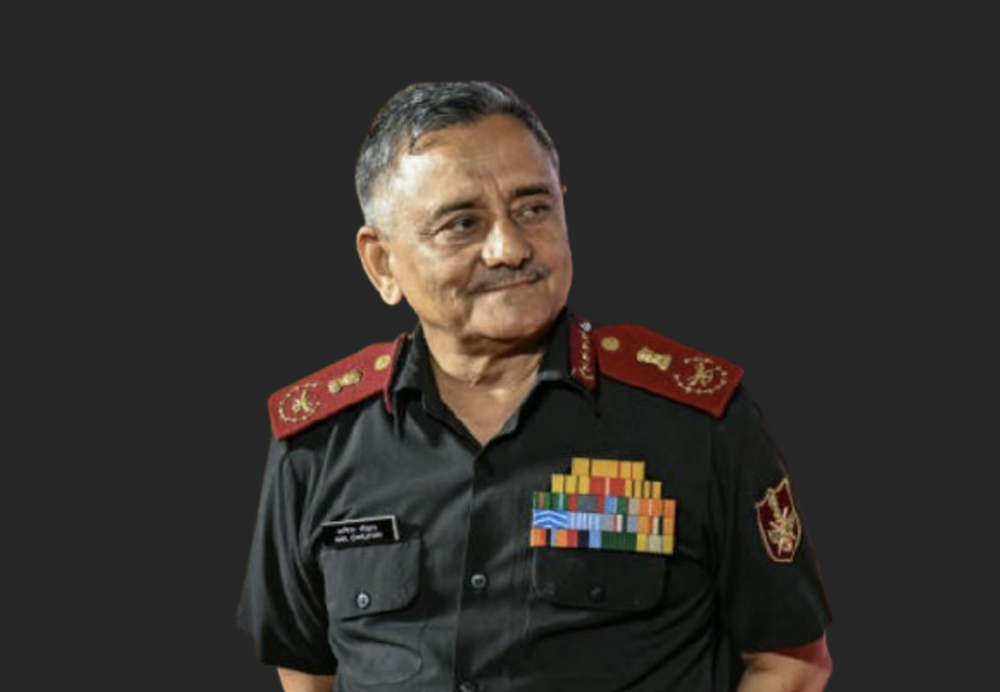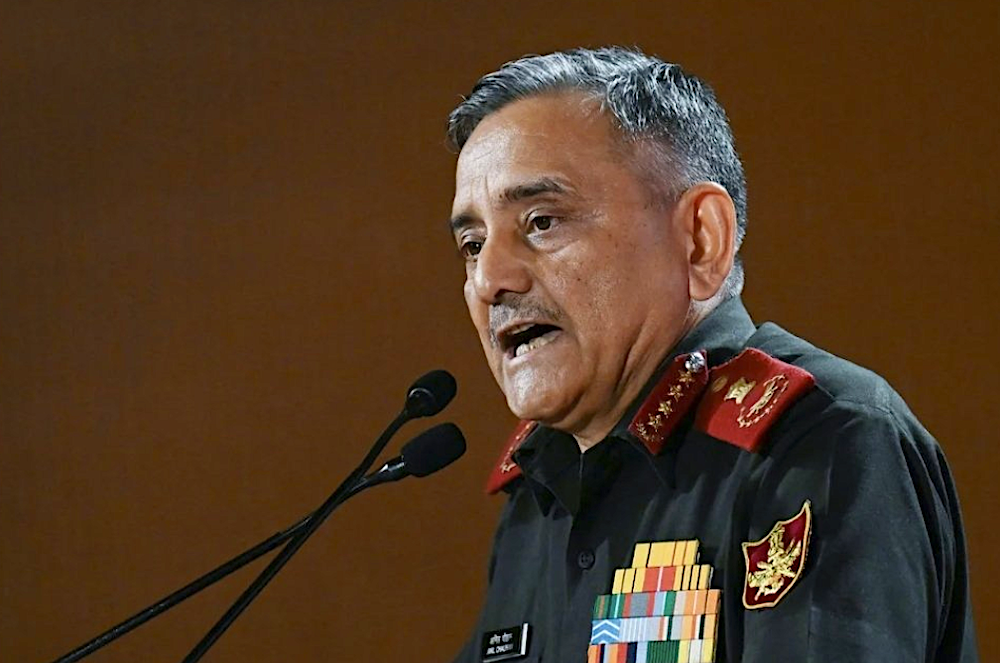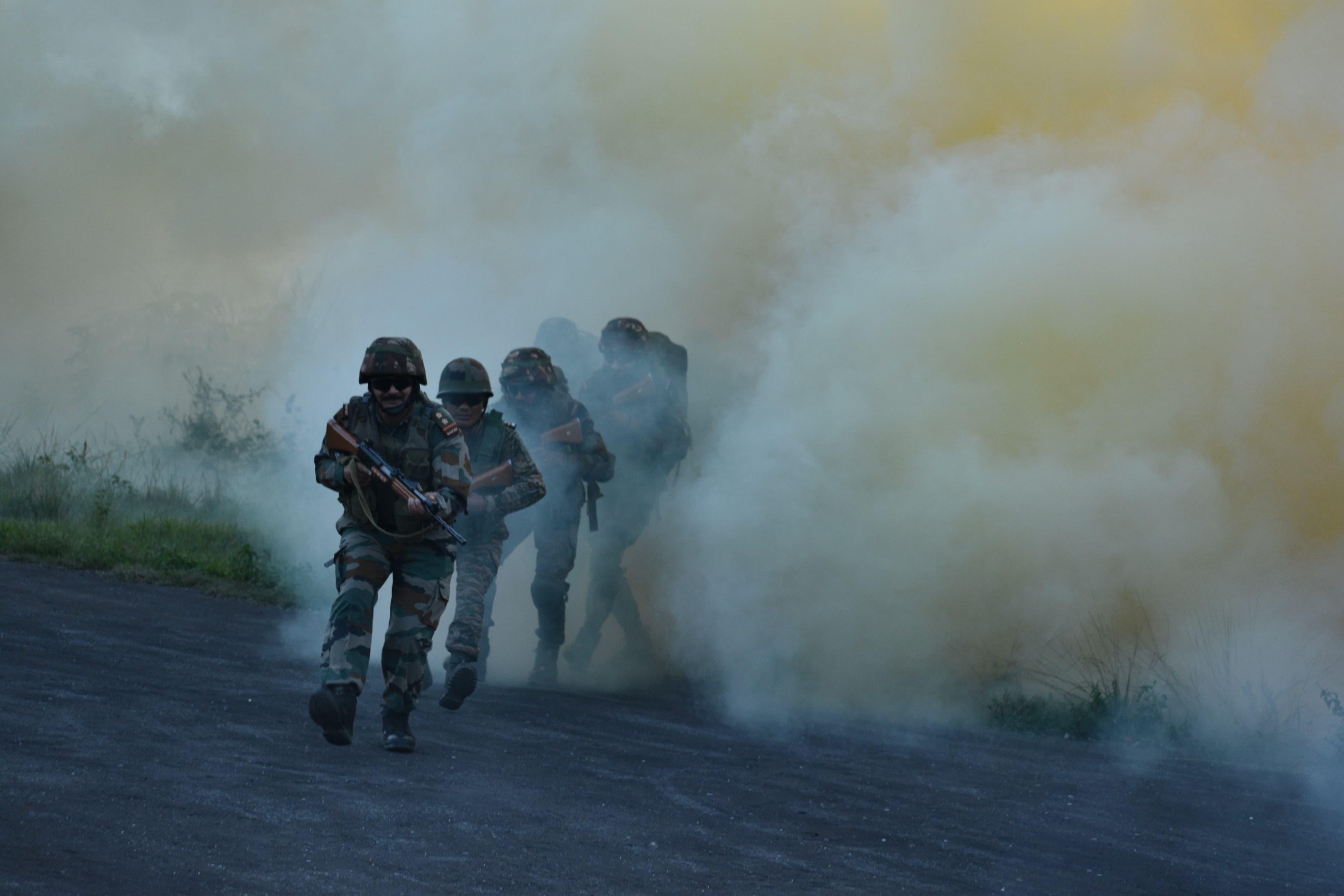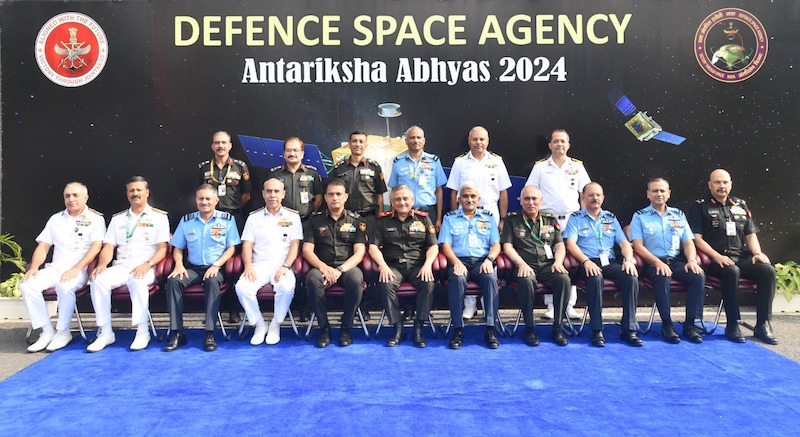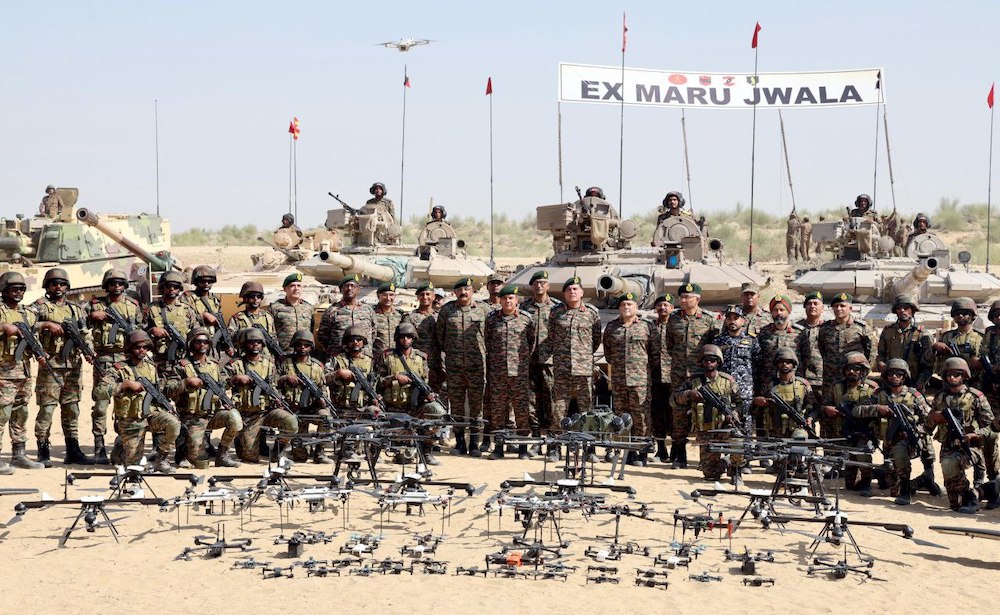 Indian troops with drones and tanks during a drill in Exercise Maru Jwala, which was a part of Exercise Trishul – 2025. (Photo: Indian Army)
Indian troops with drones and tanks during a drill in Exercise Maru Jwala, which was a part of Exercise Trishul – 2025. (Photo: Indian Army)
New Delhi: India has concluded Exercise Trishul, its most ambitious triservice military drill since Operation Sindoor in May. During the exercise, the three services – Indian Army, Indian Navy, and Indian Air Force – demonstrated enhanced joint operational capabilities across land, sea, air, cyber and space domains in a two-week operation that brought together over 30,000 personnel.
The exercise, conducted from October 30 to November 13 across the deserts of Rajasthan, Gujarat’s creek sectors and the northern Arabian Sea, involved the Southern Command of the Indian Army, the Western Naval Command and the South Western Air Command in coordinated operations that defence analysts say signal a fundamental shift towards integrated warfare doctrine.
The drill culminated in Exercise Maru Jwala on November 11–12, where soldiers from the XXI Corps, also called Sudarshan Chakra Corps, conducted high-altitude parachute insertions into the Thar desert near Jaisalmer and Ramgarh. Troops were deployed from C-130J Super Hercules transport aircraft using HAHO (high altitude, high opening) techniques, which allow paratroopers to glide considerable distances while evading radar detection – a capability crucial for deep penetration operations.
Multi-domain integration
The exercise validated India’s ability to coordinate operations across multiple theatres simultaneously. Between 20 and 25 naval vessels, including submarines and the aircraft carrier INS Vikrant, conducted amphibious operations off the Saurashtra coast while ground forces manoeuvred through the challenging Sir Creek region – a 96-kilometre disputed maritime boundary characterized by marshland and difficult terrain.
Air operations involved over 40 fighter aircraft, with Rafale and Sukhoi-30MKI jets providing air superiority alongside Mirage 2000 and domestically produced LCA Tejas platforms. Ground forces deployed T-90S and Arjun-MkII main battle tanks supported by Pinaka and Dhanush artillery systems and indigenous Prachand attack helicopters.
On Wednesday, Lieutenant General Dhiraj Seth, Vice Admiral Krishna Swaminathan and Air Marshal Nagesh Kapoor assembled aboard INS Vikrant to observe carrier-borne flying operations, a symbolic display of unified tri-service command that military officials say reflects India’s commitment to joint operational planning.
???? ??? ?????, ????? ???????? ???? ?????????
— Southern Command INDIAN ARMY (@IaSouthern) November 12, 2025
In a spectacular display of jointmanship and mission-ready synergy, the #IndianArmy and #IndianAirForce executed a coordinated airborne exercise as part of #ExerciseMaruJwala in support of… pic.twitter.com/jHX8yat0gP
Indigenous tech
A distinguishing feature of both exercises was the extensive deployment of indigenously developed systems, including surveillance drones, counter-drone platforms, electronic warfare equipment and network-centric warfare capabilities. The emphasis on domestic technology aligns with India’s Atmanirbhar Bharat self-reliance initiative and demonstrates the integration of locally manufactured defence systems into operational doctrine.
The Sudarshan Chakra Corps, which led ground operations, underwent two months of intensive preparation before the exercise. Supporting formations included the Southern Command’s Aviation Brigade, Electronic Warfare Brigade, Para-Special Forces Battalion and pathfinder elements from the 7th Para Battalion.
Defence analysts view the exercise as a clear message regarding India’s operational readiness along the western frontier. The choice of location – spanning the Sir Creek region near Pakistan – and the scale of operations suggest the military is preparing for scenarios requiring rapid multi-domain response.
The exercise validated joint intelligence, surveillance and reconnaissance protocols, electronic warfare coordination and cyber capabilities, establishing integrated command structures that enable faster decision-making cycles and synchronized strikes across multiple domains.
Military officials describe the operation as validating "theatre logistics" and "Cold Strike readiness" – a concept that combines precision targeting with technology-driven multi-domain synchronization. The drill builds on lessons from Operation Sindoor, conducted six months earlier, and represents what defence planners characterize as India’s transition from service-centric operations to comprehensive joint warfare capabilities.
The exercise also tested the military’s ability to operate in extreme environments, from the inhospitable conditions of the Sir Creek marshlands to the harsh desert terrain of Rajasthan, providing realistic conditions for validating new tactics, techniques and procedures.
With tensions periodically flaring along India’s borders, such large-scale exercises serve dual purposes: enhancing actual operational readiness while demonstrating deterrence capabilities to potential adversaries. The integration of indigenous technology, joint command structures and multi-domain coordination suggests India’s defence establishment is moving decisively towards a more agile, technology-enabled military posture.

